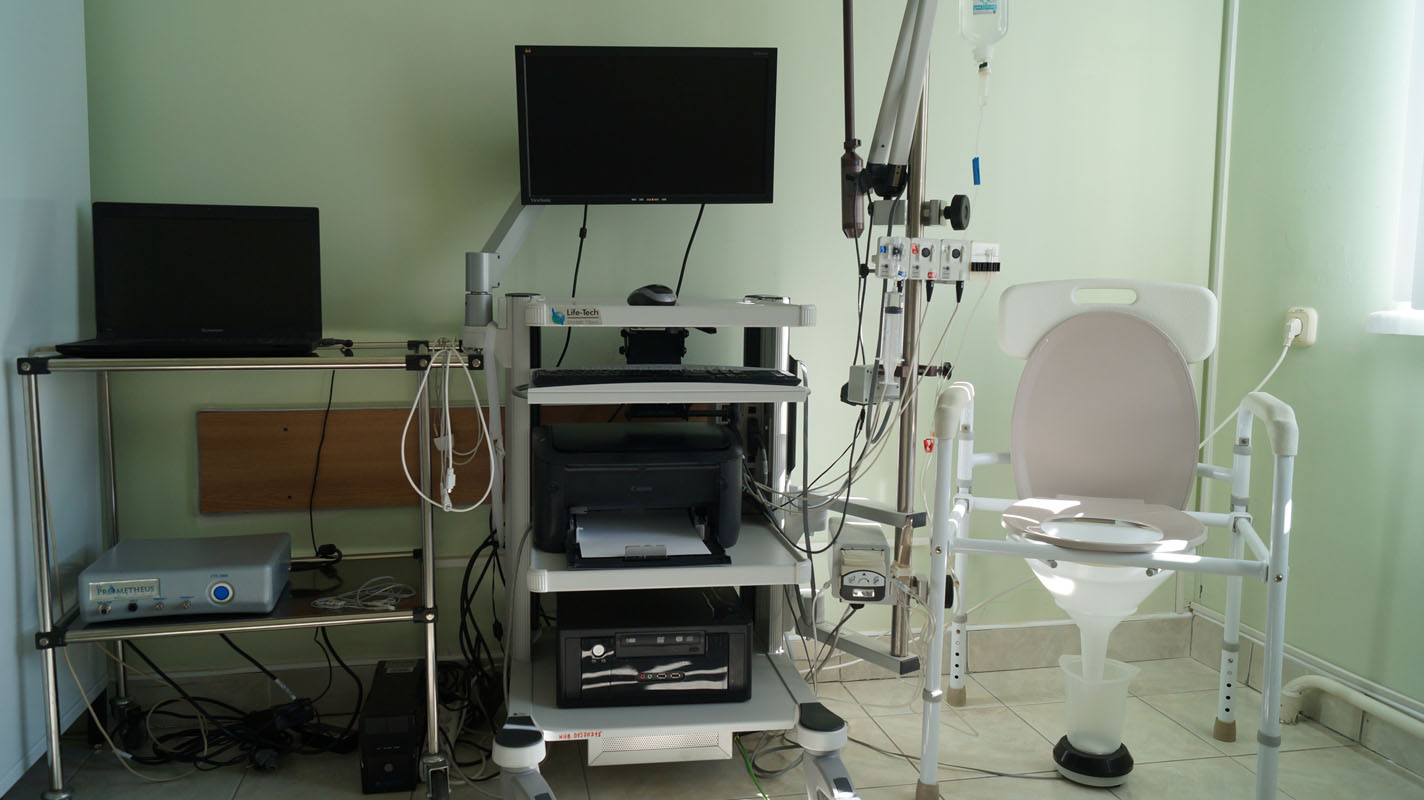Healthcare Institution «Grodno University Clinic»
Healthcare Institution «Grodno University Clinic» is a leading multidisciplinary institution in the Grodno region providing modern high-tech medical care to residents of the region and the city of Grodno, as well as foreign citizens on a paid basis.
The hospital has 27 inpatient departments equipped with modern equipment from leading European manufacturers. Every year, more than 39,000 patients undergo treatment in the hospital: these are citizens of the Republic of Belarus, as well as foreign citizens from Poland, Germany, Lithuania, Latvia, Estonia, Ukraine, Russia, Kazakhstan and other countries of the near and far abroad.
A powerful treatment and diagnostic base has been created on the basis of the clinic, including more than 50 auxiliary departments and services: 2 rooms of X-ray computer diagnostics, 2 rooms of magnetic resonance imaging, angiography room, X-ray department, department of ultrasound, functional, endoscopic diagnostics, physiotherapy department.
The clinic has its own clinical diagnostic laboratory, which is equipped with unique equipment for performing the widest range of laboratory and cytological studies, including early detection of oncological diseases. The latest test systems from leading global manufacturers are available. Full computerization and automation of the process.
There are 379 doctors working at the Grodno University Clinic. The clinic’s specialists are constantly improving their professional level, most of them have completed internships abroad, including in Germany, Israel, Poland, Russia, 15 doctors are certified according to international rules for conducting clinical trials — GCP. All our doctors are active participants in international conferences and seminars. In their work, doctors use the most modern medical equipment, advanced methods and technologies that ensure high treatment results, and also allow them to quickly establish a diagnosis in the most difficult cases.
There are 11 departments of the Grodno State Medical University on the basis of the clinic. Patients of the inpatient departments of the clinic have a unique opportunity to receive consultations from professors, associate professors, candidates of medical sciences and assistants of clinical departments of the medical university in 49 specialties.
Grodno University Clinic provides the widest range of medical and service services to foreign citizens on a paid basis:
- Consultations of highly qualified specialists in surgical, therapeutic and oncological profiles;
- Comprehensive examination of the body (CHECK-UP) within 1-3 days according to an individual program agreed upon with the patient in advance;
- Comprehensive diagnostic programs for the early detection of cancer;
- Surgical and therapeutic treatment in the inpatient departments of the clinic;
- Diagnostics and treatment of oncological diseases; chemotherapy;
- Physiotherapy;
- All types of modern high-tech diagnostics.
Magnetic resonance imaging, comprehensive studies:
- Magnetic resonance imaging of the brain, facial skull with assessment of blood vessels and early diagnosis of stroke without contrast enhancement (with contrast enhancement);
- Magnetic resonance imaging of the spine (cervical or thoracic) and spinal cord with assessment of surrounding soft tissues with MR myelography without contrast enhancement;
- Magnetic resonance imaging of the lumbosacral spine and spinal cord with assessment of surrounding soft tissues, sacroiliac joints with MR myelography without contrast enhancement (with contrast enhancement);
- Magnetic resonance imaging of the joint with assessment adjacent soft tissues without contrast enhancement (with contrast enhancement);
- Magnetic resonance imaging of the abdominal organs and retroperitoneal space with MR cholangiopancreatography without contrast enhancement (with contrast enhancement);
- Magnetic resonance imaging of the pelvic organs and retroperitoneal space without contrast enhancement (with contrast enhancement);
- Magnetic resonance imaging of the neck with assessment of surrounding soft tissues without contrast enhancement (with contrast enhancement);
- Magnetic resonance imaging of all parts of the spine and spinal cord with assessment of soft tissues and sacroiliac joints without contrast enhancement;
- Magnetic resonance imaging of the brain with MR angiography and the cervical spine with soft tissue assessment without contrast enhancement.
X-ray computed tomography, comprehensive studies:
- Standard CT studies of the brain and its structures, facial skull, neck, chest and mediastinal organs, abdominal organs and retroperitoneal space, pelvic organs, joints and bones, spine (by segments);
- X-ray computed tomography of the facial skull, neck without contrast enhancement with MPR, MIP, MinIP, SSD, curvilinear reconstruction and volume restoration with color mapping;
- X-ray computed tomography of the chest (lungs and mediastinum), abdominal cavity without contrast enhancement with MPR, MIP, MinIP, SSD, curvilinear reconstruction and volume restoration with color mapping;
- X-ray computed tomography of the abdominal cavity and pelvis organs without contrast enhancement with MPR, MIP, MinIP, SSD, curvilinear reconstruction and volume restoration with color mapping;
- X-ray computed tomography of the chest, abdominal cavity and pelvis organs without contrast enhancement with MPR, MIP, MinIP, SSD, curvilinear reconstruction and volume restoration with color mapping.
Special examination methods:
- CT angiography;
- Virtual endoscopy (virtual colonoscopy);
- Perfusion studies of the brain, prostate gland;
- Functional and anatomical examination of the heart;
- Determination of the coronary calcium index;
- High-resolution CT of the lungs with advantage lung software processing analysis.
Endoscopic diagnostics:
- Colonoscopy under anesthesia;
- Rectosigmocolonoscopy;
- Esophagogastroduodenoscopy (FGDS).
Ultrasound diagnostics:
- All organs and systems. Ultrasound with elastography.
X-ray examinations:
- A wide range of standard and special examinations. Mammography.
Laboratory diagnostics:
- A full range of laboratory tests. The latest test systems from leading global manufacturers. Modern unique equipment. Full computerization and automation of the process;
- Early diagnosis of oncological diseases.
Extracorporeal hemocorrection:
- Provision of hemodialysis procedure during a business trip, cultural and educational or health resort tour («guest dialysis»);
- Ultraviolet irradiation of blood;
- Intravenous laser irradiation of blood, magnetic treatment of blood;
- Hemodialysis, plasmapheresis (plasma filtration);
- Hemosorption;
- Extracorporeal liver support.
Our departments:







